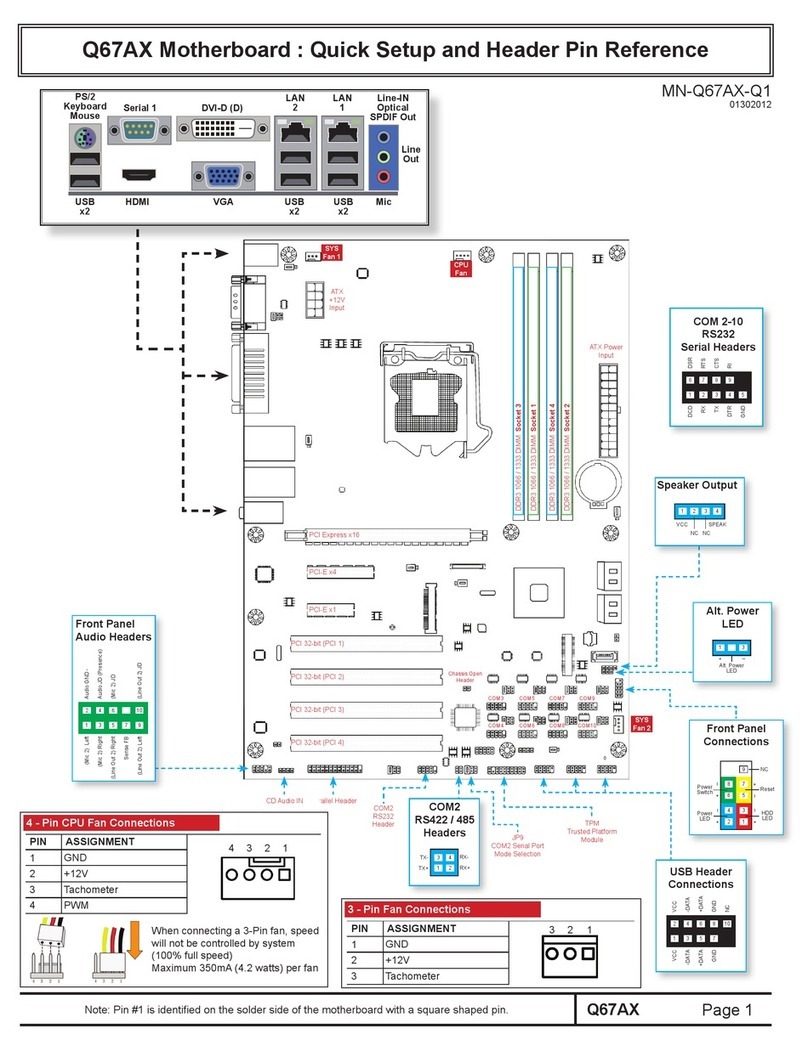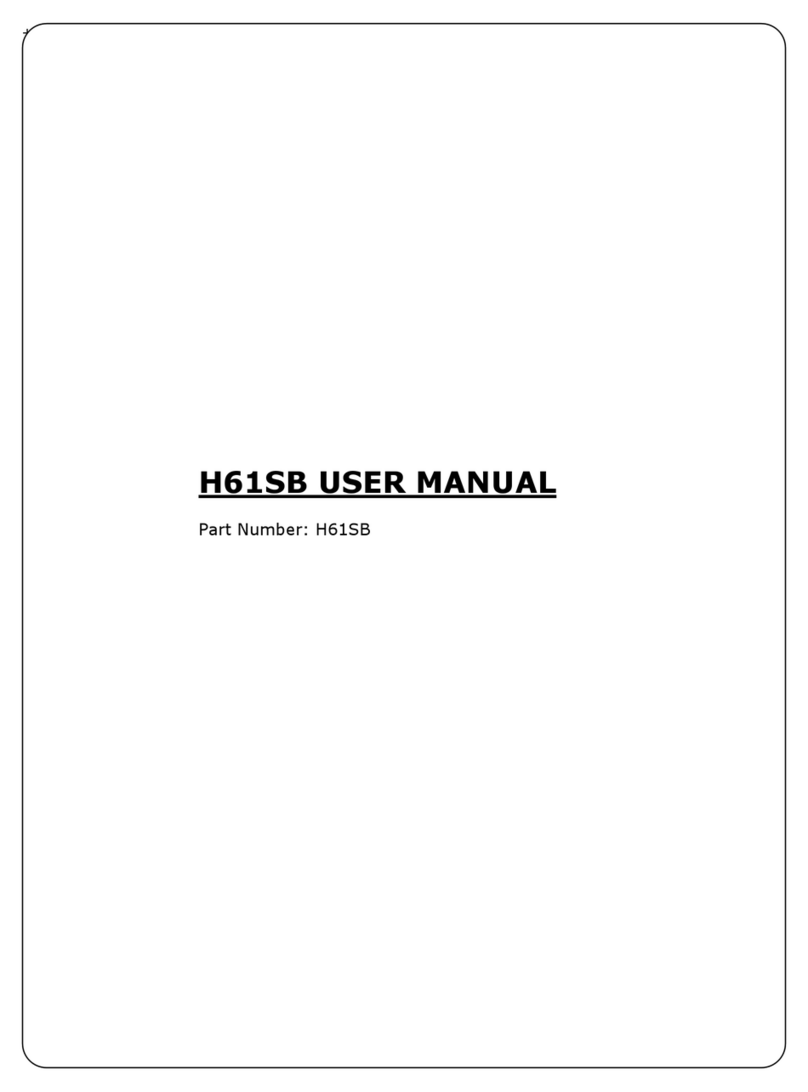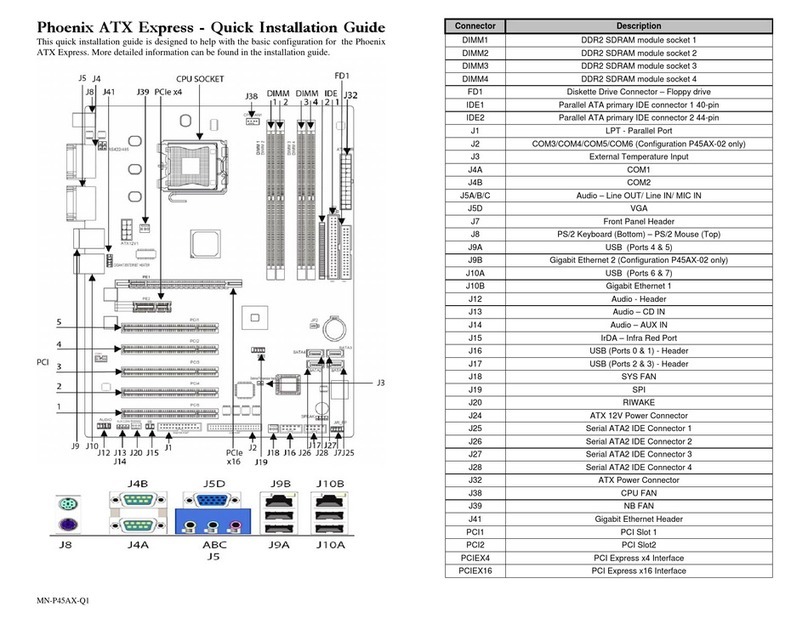Introduction
Table of Contents
Notice........................................................ III
Introduction...........................................IV
Chapter 1 Pre-Configuration...... 1
Step 1 Setting the Jumpers 3
Jumper Locations ............................................................. 4
CMOS Reset....................................................................... 5
ATA-Disk Connector Voltage Selection.......................... 5
LCD Power Voltage Selection.......................................... 5
Step 2 DRAM and Cables Installation 6
Gator 550-G Memory Configuration................................ 6
Installing Cables ............................................................... 7
Power and Control Panel Cables .................................... 7
Installing Peripheral Cables............................................. 7
Index of Connectors ......................................................... 9
Chapter 2 HIFLEX BIOS Setup .
........................................... 11
Standard Setup ............................................................... 12
Advanced CMOS Setup .................................................. 13
Advanced Chipset Setup................................................ 17
Power Management Setup ............................................. 18
PCI/Plug and Play Setup ................................................ 20
Peripheral Setup ............................................................. 23
Auto Detect Hard Disk .................................................... 25
Change User Password.................................................. 26
Change Supervisor Password ....................................... 26
Auto Configuration with Optimal Settings ................... 26
Auto Configuration with Fail-Safe Settings.................. 27
Save Settings and Exit ................................................... 27
Exit without Saving......................................................... 27
Post Codes ...................................................................... 27
I




































